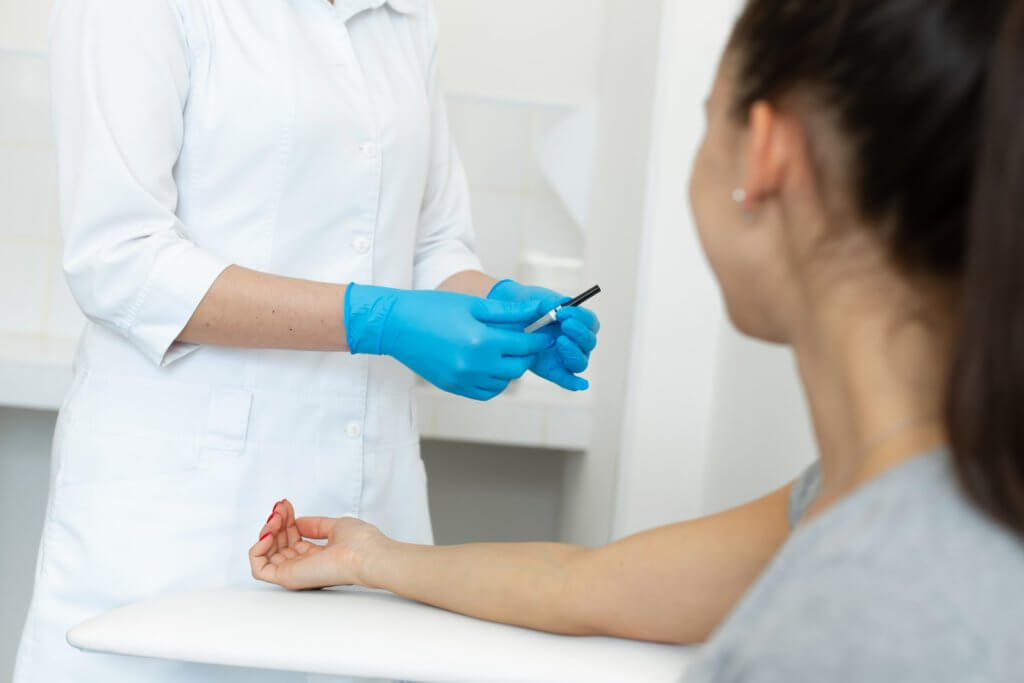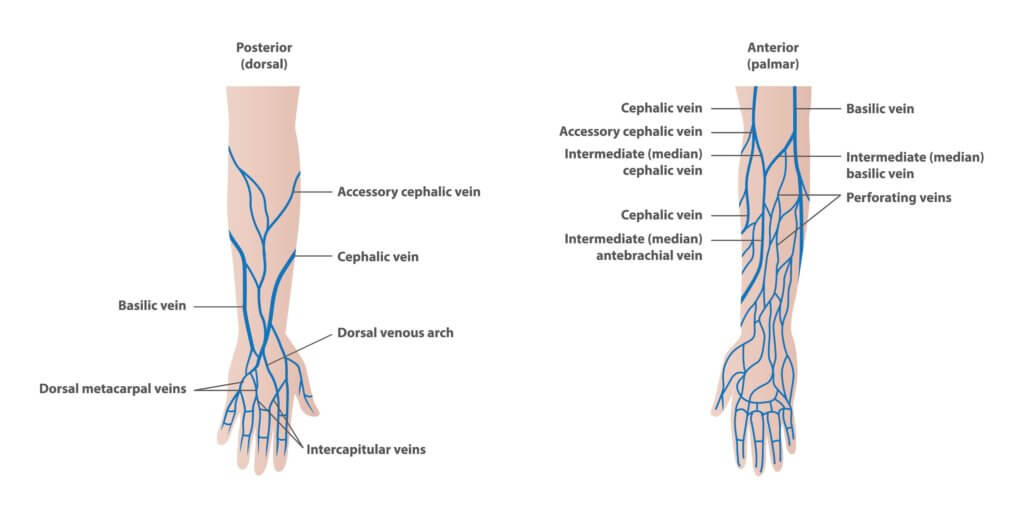01 Apr Where Can a Phlebotomist Draw Blood From?
The main job of a phlebotomist is to draw blood from patients. They do this so the blood can be checked for any illnesses, given to others who need it, or to see how well someone’s treatment is working. Since they need to get the blood from veins, phlebotomists have to be very good at knowing which are best to use. In this article, we’ll look at where a phlebotomist can take blood from. We’ll talk about the most common places they choose and why they avoid others. This helps us understand how they make the process as easy and comfortable as possible while also making sure they get a good blood sample.
The Phlebotomist’s Choice
Phlebotomists can technically draw blood from any vein that they can feel through the skin. But not all veins work the same way. They look for veins that are easy to see, easy to feel, and strong enough for the needle. Some veins are too small or too close to important parts of the body, making them poor choices because they could cause problems. For example, certain areas have a bigger chance of infection, are too close to big arteries or nerves, or would just be uncomfortable for the patient.
Phlebotomists also run into problems like damage, scarring, or veins already being in use for other medical treatments. When this happens, the phlebotomist’s skill and decision-making are really important. They need to be able to think fast and use their medical knowledge to choose the best vein for taking blood safely and effectively.
Common Draw Sites
1. Antecubital Fossa
This is the part of your arm right in front of your elbow. It’s the most common spot phlebotomists use for blood draws. This area has a few veins that are just right for taking blood:
Median Cubital Vein
This vein runs through the middle of the inside bend of the elbow. It’s usually the first choice because it’s big and not too deep, which makes it more comfortable for the patient.
Cephalic Vein
This vein runs along the outer side of the arm. Generally, it’s a good second option if the median cubital vein isn’t easy to use.
Basilic Vein
This one is on the inner side of your arm. It’s a bit bigger, but it’s also close to nerves and arteries. That means the person taking the blood needs to be more careful when using this vein.
2. Hand and Wrist Veins
If a phlebotomist can’t use the veins on the inside of the elbow, they will usually look at the veins on the wrist or back of the hand. Even though there are a lot of options here, these veins are closer to the skin and can be more sensitive. This means getting blood from there might be less comfortable, so they’re usually not the first choice. This area has a few different draw options:
Dorsal Metacarpal Veins
These veins are on the back of your hand, running over the bones that go to your fingers.
Cephalic Vein
This is the same vein from the inner elbow. It goes down along the thumb side of your arm and can be reached at the wrist.
Basilic Vein
Like the Cephalic, this vein goes down to the wrist from the inner elbow. It is found on the outer pinky side of the arm and wrist.
Other Blood Draw Sites
Sometimes, the usual spots for taking blood aren’t an option because of things like past surgeries, scars, or other health issues. Here are some other options for blood draws:
1. Femoral Vein
This vein is in the groin area. Phlebotomists mostly use it in emergencies or when the patient’s arms or hands aren’t good for blood draws.
2. Ankle and Foot Veins
These are often used for babies or in special circumstances. However, there’s a higher chance of getting an infection from here.
3. External Jugular Vein
This vein goes across the neck. So, taking blood from here requires incredible skill and experience. It’s a rare choice, only used as a last resort.
Things to Think About
Before taking blood, phlebotomists must think about a few important things:
-
- Patient Comfort and Safety: They choose a spot for the needle that won’t hurt too much or cause other problems.
- Vein Condition: They look for veins that are easy to see and feel, and big enough for the needle.
- Health and Medical History: They stay away from places with scars, infections, or other health issues.
Conclusion
In conclusion, phlebotomists know a lot about the body’s veins and how to take blood safely. By knowing the best places to take blood and being ready to adjust to each person’s needs, they ensure everyone gets the best care. If you’re getting your blood taken or want to learn how to do it, it’s good to know about the different options you can use. Remember, the most important thing is that the patient is comfortable during the whole process.


